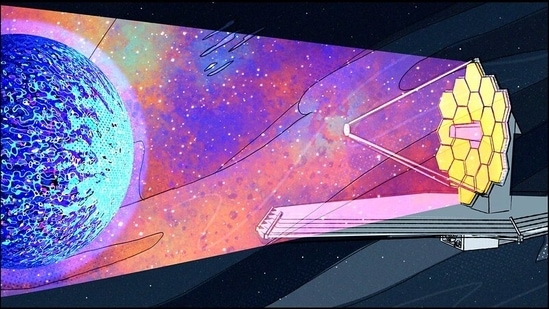Now, visually impaired can 'listen' to James Webb Telescope images of universe
Although the main objective behind this project is to support visually impaired and low-vision listeners, its immersive experience captivates anyone who listens.
The pictures taken from James Webb Space Telescope (JWST) are a magnificent sight to behold. For the visually impaired, a team of scientists at National Aeronautics and Space Administration (NASA) with some musicians and a member of the visually impaired community have collaborated to map the data of the telescope images into sound.

The soundtracks allow listeners to hear the cosmic cliffs of Webb’s first full colour images of the Carina Nebula and Southern ring Nebula. The JWST had captured two views of the Southern Ring Nebula, one in near-infrared light and mid-infrared light. Both of the images are mapped into sound, the listeners can contrast different images as both have distinct tones.
“Our goal is to make Webb’s images and data understandable through sound – helping listeners create their own mental images,” Matt Russo, a musician involved in the project, said.
What is the technique used for this?
These sounds are not captured in space, but mapped from near-infrared and mid-infrared light images captured by the Webb using the sonification technique. Sonification uses audio to give users a perception of data.
Sound of the Carina nebula
The musicians have created this buzzing sound by assigning distinct notes to the semi-transparent, translucent regions and very dense areas of gas and dust in the Carina nebula.
In the sonification of Carina nebula, NASA says that the bright light near the top of the image have loud and high sounds, but bright light near the middle is loud and lower pitched. Lower frequencies and clearer, undistorted notes are used to express dimmer, dust-obscured areas that emerge lower in the image.
Sound of the Southern Ring nebula
In the sonification of the two views of the Southern Ring nebula, the colours in the images are mapped to pitches of sound. The frequencies of light waves are converted directly to frequencies of sound.
Near-infrared light is expressed by a higher range of frequencies at the starting of the track and in the middle, the notes change to lower to show that the mid-infrared light has longer wavelengths of light.
Although the main objective behind this project is to support visually impaired and low-vision listeners, its immersive experience captivates anyone who listens. NASA says, “One significant finding was from people who are sighted. They reported that the experience helped them understand how people who are blind or low vision access information differently.”






